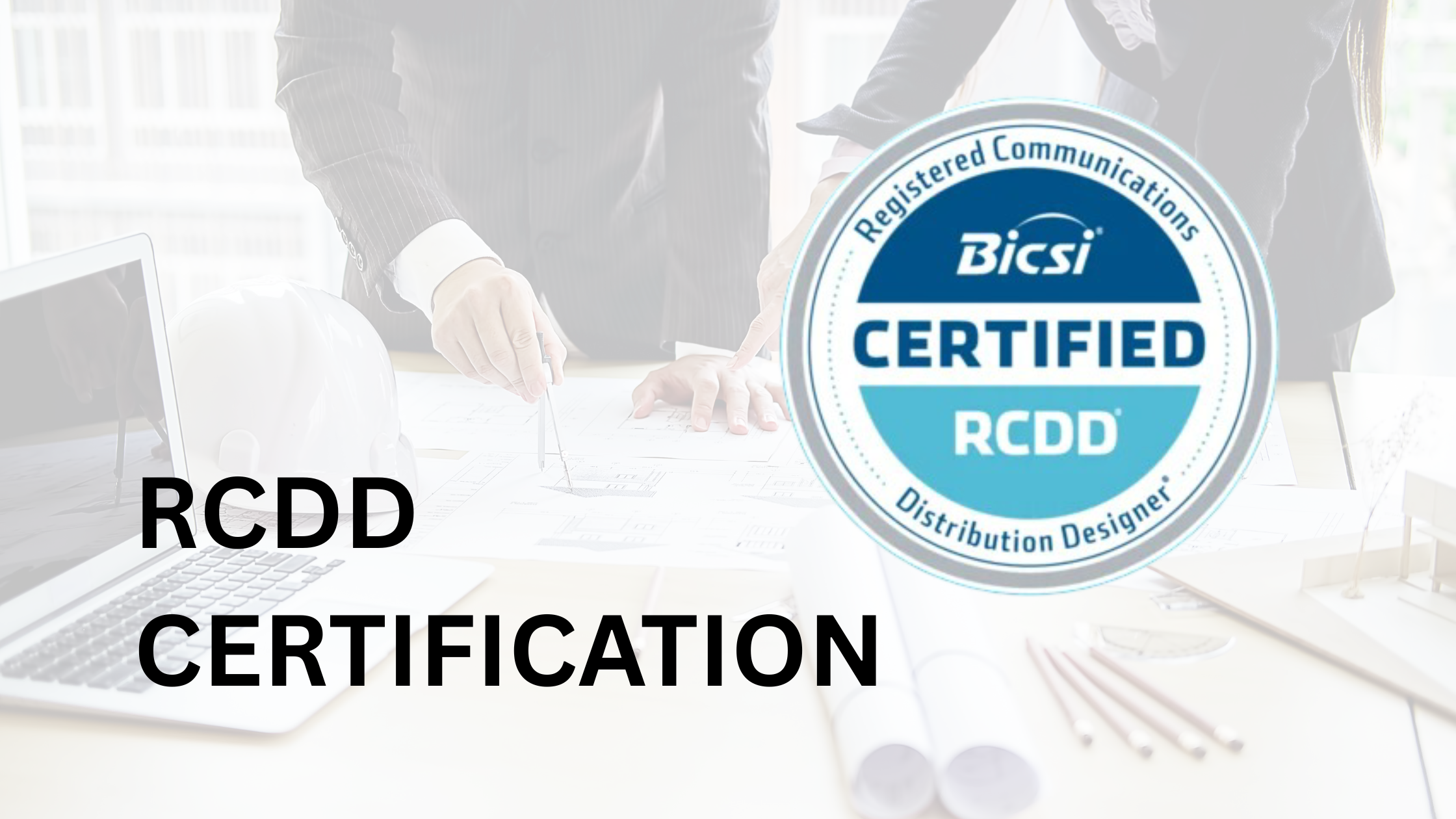RCDD Certification: Your Guide to a Structured Cabling Career
In the rapidly evolving world of telecommunications and structured cabling, the demand for professionals who understand the complexities of design and implementation has never been higher. One certification that stands out in this field is the RCDD Certification—Registered Communications Distribution Designer. Offered by BICSI (Building Industry Consulting Service International), the RCDD is a globally recognized credential that signals expertise in the design, integration, and implementation of information transport systems (ITS).Whether you're already in the industry or considering a career change, obtaining the RCDD Certification can significantly enhance your career prospects. In this blog post, we'll explore what the RCDD Certification is, why it matters, the steps to earn it, and how it can elevate your professional standing in the tech and telecommunications landscape.
What is the RCDD Certification?
The RCDD Certification is a prestigious credential awarded to professionals who demonstrate advanced knowledge in the design and implementation of telecommunications distribution systems. It's administered by BICSI, a professional association supporting the advancement of the information and communications technology (ICT) community.RCDDs are skilled in creating detailed telecommunications infrastructure designs for commercial buildings, data centers, and other complex environments. These designs encompass voice, data, audio/video, security systems, and more. The credential is often required for high-level design roles in engineering firms, government contracts, and large-scale construction projects.
Why is the RCDD Certification Important?
The RCDD Certification is not just a resume booster—it's a mark of excellence and reliability in the field of ICT. Here’s why it holds significant value:
1. Industry Recognition
BICSI’s RCDD is one of the most respected certifications in the telecommunications and structured cabling industry. It is recognized globally by employers, contractors, consultants, and project managers.
2. Increased Career Opportunities
RCDD-certified professionals often qualify for more senior-level roles and leadership positions. Many government and enterprise-level projects require the involvement of an RCDD in the design process.
3. Higher Salary Potential
With increased responsibility and expertise comes higher compensation. According to surveys, RCDD-certified professionals tend to earn significantly more than their non-certified peers.
4. Professional Credibility
Having the RCDD Certification demonstrates to clients and employers that you are capable of meeting industry standards, solving complex problems, and delivering efficient, code-compliant designs.
Eligibility Requirements
Before you can sit for the RCDD exam, you must meet one of the following criteria:
- Five years of ICT design experience.
- Two years of ICT design experience plus three years of additional experience in the ICT industry.
- Hold a degree in ICT or a related field (such as engineering or architecture) plus a minimum of two years of ICT design experience.
BICSI requires candidates to submit an application verifying their eligibility before they can register for the exam.
Exam Overview
The RCDD exam consists of approximately 100 multiple-choice questions that must be completed within 2.5 hours. The questions are based on the content of the BICSI Telecommunications Distribution Methods Manual (TDMM), which is the official study guide for the certification.Topics covered in the exam include:
- Telecommunications Spaces
- Backbone and Horizontal Distribution Systems
- Data Centers and Building Automation
- Network Design and Implementation
- Codes, Standards, and Best Practices
Candidates must demonstrate both theoretical knowledge and practical application of design principles in these areas.
How to Prepare for the RCDD Exam
Preparing for the RCDD exam requires a mix of study, practical experience, and familiarity with the TDMM. Here are some tips to help you prepare effectively:
1. Get the TDMM Manual
The Telecommunications Distribution Methods Manual is the core study material for the exam. It covers every topic in detail and is often referred to as the “RCDD Bible.” Reading and understanding this manual is essential.
2. Take a BICSI Training Course
BICSI offers instructor-led training courses that provide structured guidance through the TDMM content. These courses also include practice tests and opportunities to ask questions, making them a great option if you prefer a classroom setting.
3. Join Online Study Groups
Many professionals preparing for the RCDD exam join online forums, discussion groups, or LinkedIn communities where they can share resources, ask questions, and exchange tips.
4. Use Practice Exams
Simulated exams help you get used to the testing format and identify areas where you need more review. Aim to take multiple practice exams under timed conditions.
5. Set a Study Schedule
Given the technical depth of the exam, consistent study over several months is often necessary. Break the TDMM into manageable sections and allocate specific time blocks each week for review.
Maintaining Your RCDD Credential
Once certified, you need to maintain your RCDD status by earning 45 Continuing Education Credits (CECs) every three years. BICSI offers numerous ways to earn CECs, including attending conferences, completing online courses, and participating in industry-related events.Maintaining your certification not only keeps your knowledge current but also ensures that you remain in good standing with BICSI and eligible for future projects that require an RCDD.
Who Should Get RCDD Certified?
The RCDD Certification is ideal for professionals in the following roles:
- ICT Consultants and Engineers
- Project Managers in Telecommunications
- Network Infrastructure Designers
- Building Systems Integrators
- Government and Military Contractors
- Data Center Specialists
Whether you're looking to specialize or advance your career, the RCDD can be a key differentiator in a competitive job market.
Conclusion
The RCDD Certification is more than just a credential—it's a gateway to leadership and specialization in the ICT industry. With its rigorous standards and global recognition, earning this certification sets you apart as a trusted expert in structured cabling and network infrastructure design. Whether you’re aiming for career advancement, new job opportunities, or professional credibility, the RCDD Certification is a smart investment in your future.

